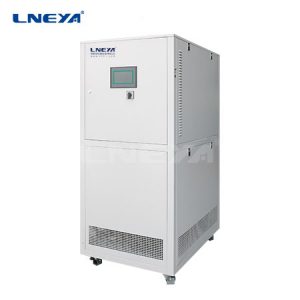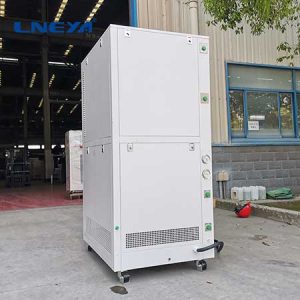How to do a good job in the acceptance of the recirculating water chiller after maintenance
1. Leakage of cooler
In the daily maintenance work, the leakage of LX -25°C ~ +30°C Recirculating Chillers is a common cooler maintenance fault, mainly because the plate cooler has a long sealing cycle and thin plates, which may cause leakage during long-term overload operation.

Therefore, after the leakage problem of the circulating water cooler is solved, it is necessary to consider both internal and external leakage in the acceptance, mainly to check whether the inlet parameters of the cold and hot media are consistent with the original planning value.
When the outlet parameters are not up to the planning value, it is necessary to stop the machine and carefully check the working condition between the plates.
2. The plates of the plate cooler are misaligned
Under the working condition of the industrial cold water chiller, due to the large change in the medium flow and pressure of the circulating water cooler and the multi-pass combination and long-term operation of the plate cooler, it is easy to cause plate dislocation, which is very easy to cause leakage, so it must be treated in time.

In the process of acceptance, it is necessary to focus on checking whether the heat exchanger plates are deformed; Check whether the sealing gasket of plate cooler falls off.
If the above phenomenon is found, even if there is no leakage, the deformed plate and the gasket sliding away from the gasket groove need to be replaced in time.
3. Maintenance and acceptance method of cooler in case of lack of maintenance equipment on site
When the plate of the plate cooler is deformed, cracked or perforated, the aging and cracking of the gasket shall be given priority during the maintenance and acceptance of the circulating water cooler.

If the heat exchange equipment at the work site does not have a backup unit and cannot be shut down, simple on-site disposal can be carried out.
The simple disposal method on site is to extract the damaged plates and the normal working plates in pairs, and then cross splice them. If the number of damaged plates is not large, the number of reduced channels is not large, which has little impact on the normal production.
 LNEYA
LNEYA
 简体中文
简体中文


















































































